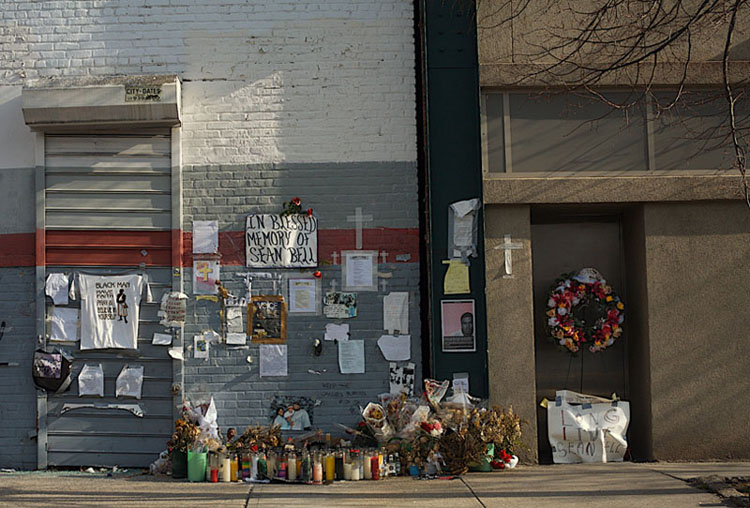Nearly 14 years after her son was killed by NYPD officers, a Queens mother is pushing for changes to how district attorneys prosecute officers accused of violent acts.
Valerie Bell, the mother of Sean Bell who was killed by NYPD officers on Nov. 25, 2006, called on district attorneys around the country to make use of a prosecutor toolkit that provides concrete steps different jurisdictions can take to better prosecute officer-involved fatalities and use of force cases.
“We need to have transparency and accountability,” said Bell in an online forum hosted on Friday hosted by John Jay College of Criminal Justice’s Institute for Innovation in Prosecution, referring to two of the focal points of the toolkit.
Sean Bell, then 23, was shot and killed on the morning of his wedding, when he and two friends were coming home from spending the night at a strip club for his bachelor party. The officers fired 50 bullets into the car injuring the two friends and killing Sean Bell. Three of the five officers involved in the shooting were criminally charged. No one was found guilty.
Since her son’s death, Bell has dedicated herself to changing public policy around policing not just in the name of her slain son and other prominent victims of police violence like Floyd, but for the names no ones ever heard of. “To be a voice for not only Sean, but others,” she said. “to let them know that we’re tired of what’s going on.”
The toolkit was published by the Institute for Innovation in Prosecution. Bell and other people who lost loved ones to police violence — such as Victoria Davis, the sister of Delrawn Small, Gwen Carr, the mother of Eric Garner, and Kadiatou Diallo, the mother of Amadou Diallo — collaborated with police chiefs, prosecutors, and other experts around the nation to come up with ways different jurisdictions can work to reduce use of force, conduct rigorous and transparent investigations, strengthen relevant laws and policies and have open dialogue between prosecutors and community members.
Their efforts come in the midst of weeks-long nationwide protests against police misconduct, and brutality following the death of George Floyd in Minneapolis on May 25 after an officer pinned him down by the neck with his knee.
In New York State, the Attorney General’s office has handled officer-involved fatalities ever since Gov. Andrew Cuomo signed an executive order in 2015 giving them jurisdiction. But, the toolkit is still relevant for the city’s district attorneys, said Director of the Institute for Innovation in Prosecution and former Manhattan Assistant District Attorney Lucy Lang.
“The factors about communication and transparency are true for all sorts of investigations, including others involving non-fatal use of force.” Lang said.
She said that the institute has distributed the toolkit to all five of New York City’s district attorneys.
Queens District Attorney Melinda Katz did not respond to questions about whether or not her office would consider using the toolkit and whether or not they are looking into their practices around cases involving law enforcement given the current climate for reform to how police misconduct and violence is handled.
Bell said once the protests are over, it’s crucial to make sure elected officials follow through on change. This is not an obscure policy matter to her, it’s one step to purging the criminal justice system of a racial bias that cost her a child.
“We have to write it down as I said, have a vision,” she said. “And then the victory will be won — if you continue to speak about the things that are being done senseless and wrong to our people of color.”






